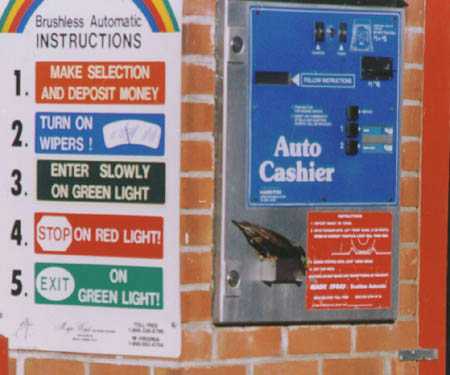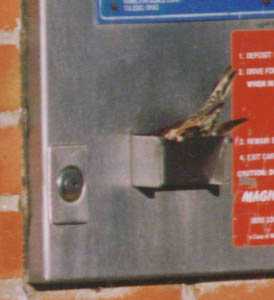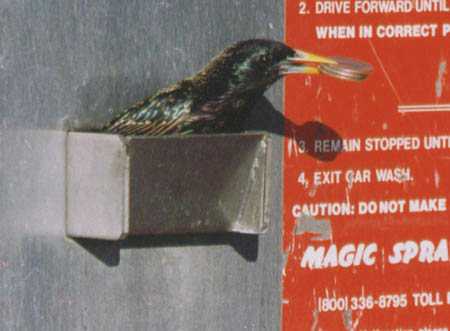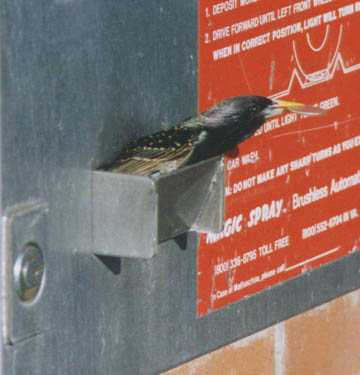I have a hard time believing that this story is true: it’s just too crazy – but the photos are good and hard to forge without more resources than your average internet prankster. So, here’s the tale as it was told to me…
There’s a company in the States that sells automatic car washers as a complete solution, including the washing system, cash box, installation of the building, etc. These are completely automated: you drive up, put your money into the machine, then drive through.
In any case; after the installation of a particular one of these machines, the owner noticed that the return from the machine was not so much as should be expected. Diagnostics were run and the cash processor seemed to be okay, so everybody was at a loss. The owner even went so far as to accuse the supplier’s staff of having keys to his cashbox, and returning to the scene to steal the money.
Eventually, at his wits end, the owner set up security cameras to try to catch the thief in the act. Here are some stills from the footage:

The first image. Yes, that’s a starling that’s just landed on the coin return slot.

And there’s the starling, wriggling in to the coin return slot, where, presumably, it’s pushing it’s way up into the cash box through the return chute.

The starling with some coins!

The starling’s dropped a couple of coins, but is still wriggling to get free of the slot with it’s remaining prize.
Apparently, they later determined that it was not one, but several, birds who were robbing the car wash. Following them discovered a cache of loose change on the roof of the car wash and beneath an exposed root of a nearby tree.
So; what do you think – real or fake?